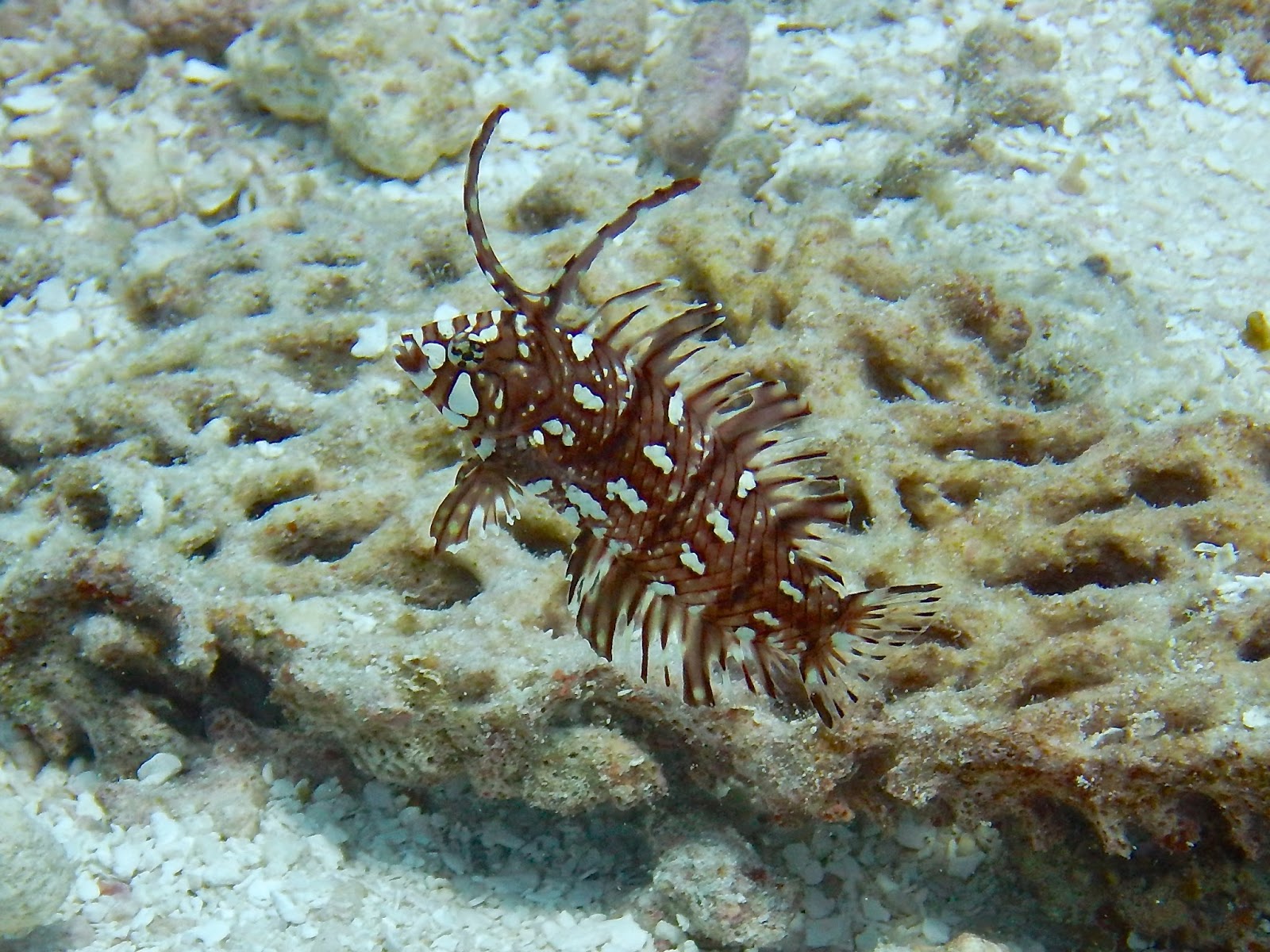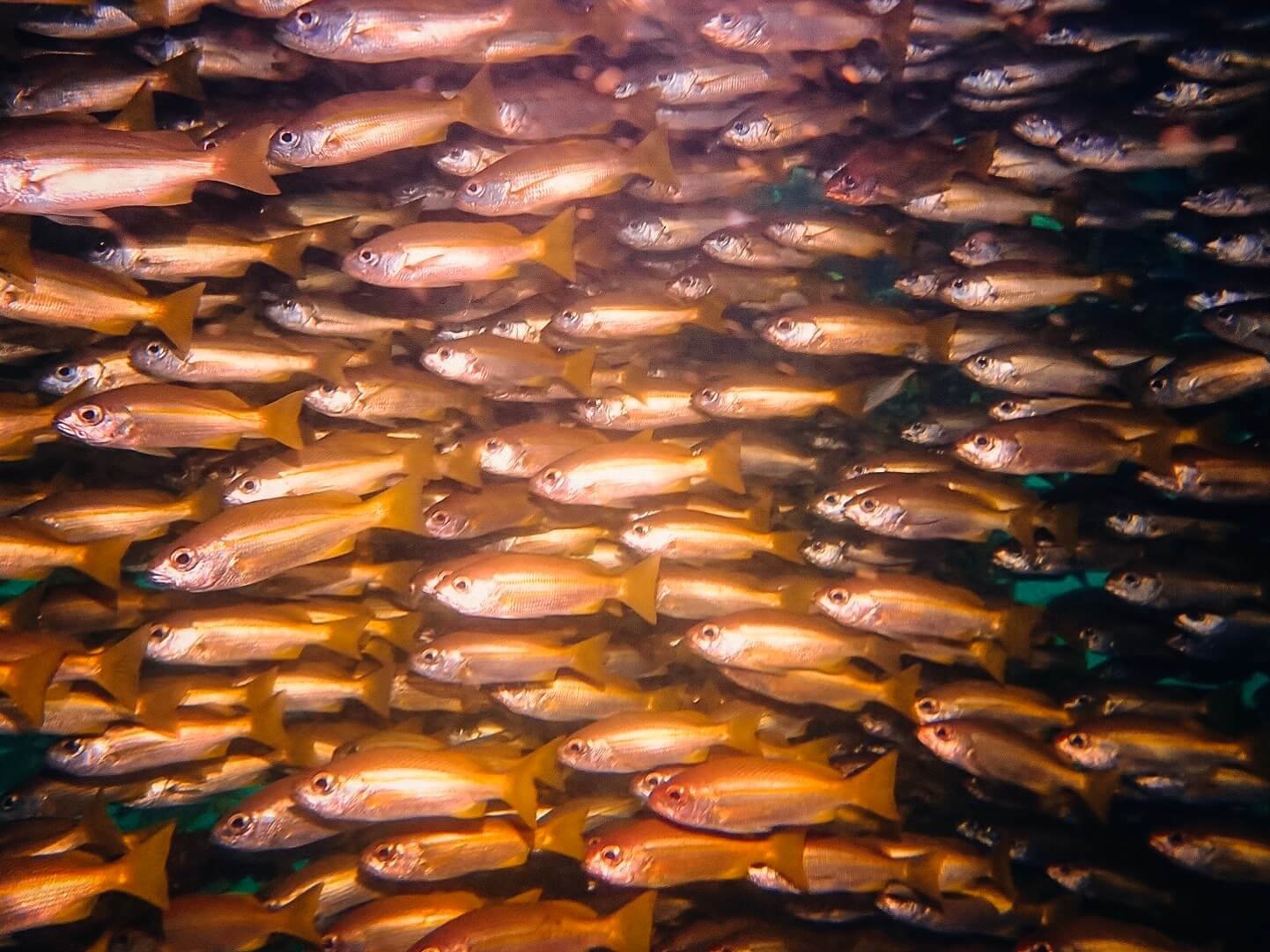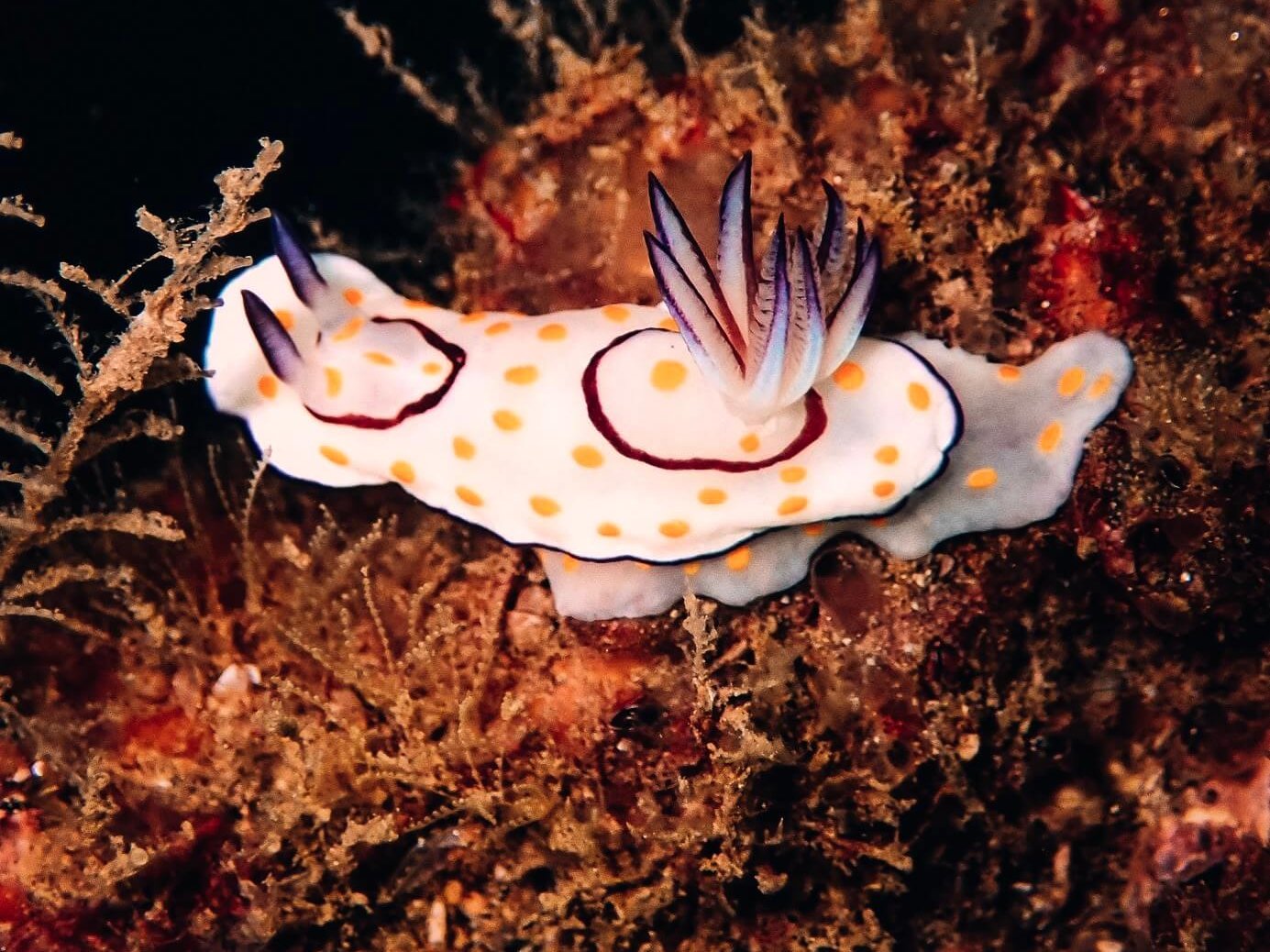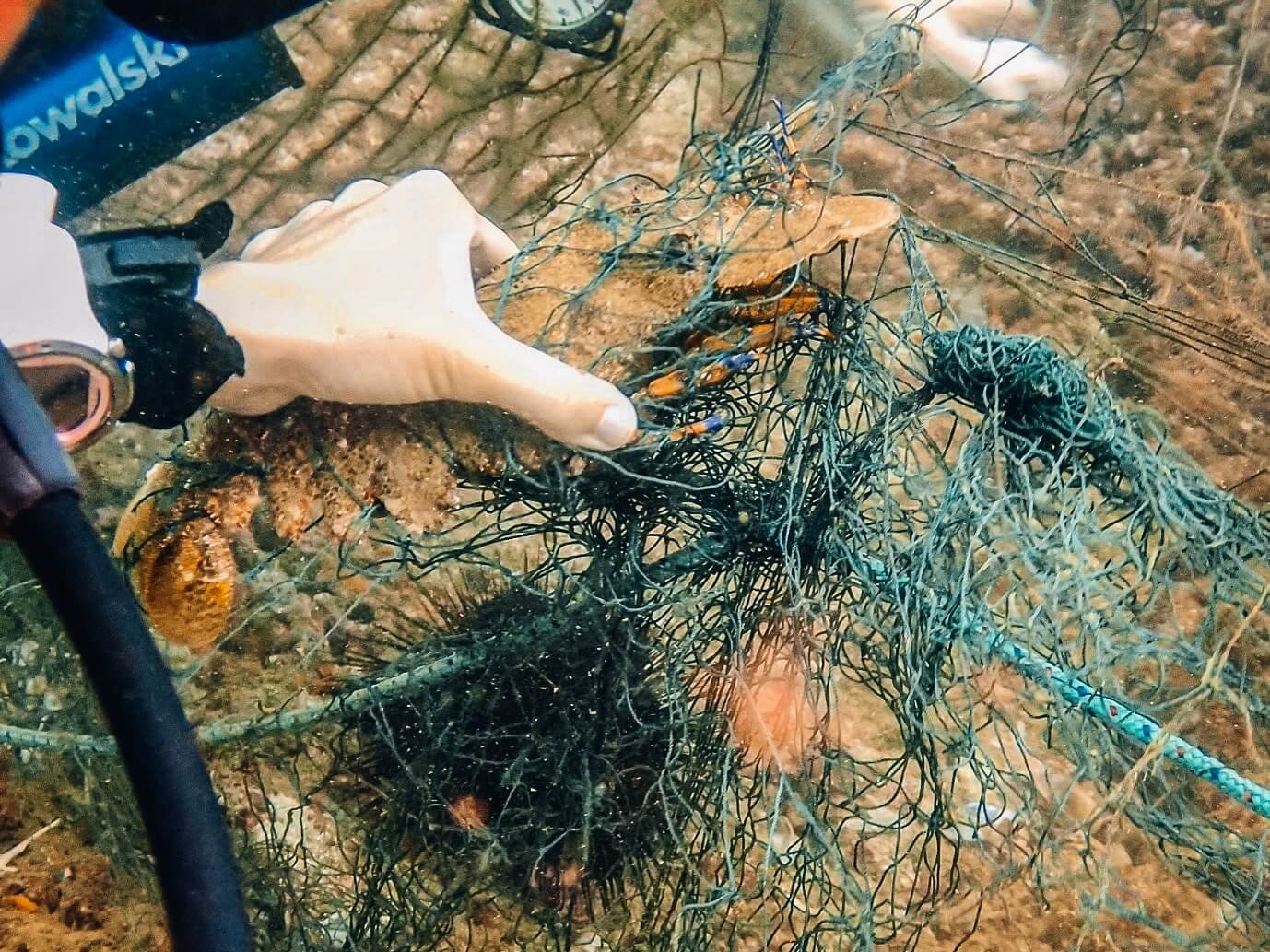Palau is home to some 1500 species of fish due to its unique location at the crossroads of the Pacific Ocean and the Philippine Sea. They come in an incredible array of colors and shapes and sizes, from butterflyfish of every color imaginable, to fearsome apex predators such as tuna and sharks. This list is by no means complete, nor is it any sort of ranking of the most common fish. It is merely a selection of photos I pulled from my camera. Some of these I see every day. Some I was lucky enough to catch a glimpse of just once and may never spot again.
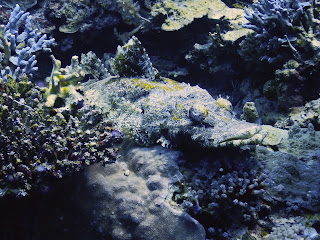 |
The other day at Dexter’s Wall I saw my first crocodile fish just chilling there on the coral, cool as a cucumber and lurking with lazy eyes just like a real crocodile would. They are carnivorous fish and use their camouflage to ambush their prey. |
 |
There are turtles all over the place here and it is such a joy to see them all the time after diving in places where sightings were rare. |
 |
These guys usually swim in schools. Their round faces and big eyes remind me of cartoon characters. |
 |
This is the resident napoleon wrasse at Blue Corner and he is like an adorable puppy dog, swimming over from diver to diver to say hello. Sometimes people bring him hard boiled eggs and he gets really excited. The other day I brought him a couple rambutan and he loved them so much that the next time I was at Blue Corner, I caught him bumbling over to me as fast as he could (not very) to see if I had any more for him. I didn’t but he let me pet him. |
 |
I usually see these guys solitary, lurking under a bit of coral somewhere, and so seeing a whole group of them was a beautiful sight. |
 |
There are some really cool varieties of unicornfish here, and like their name suggests, a lot of them have large “unicorn horn” protrusions from their foreheads. This one just has a big nose though. And between the lips and the nose I always think their face is a bit like a person’s. |
 |
I’ve written a fair bit about the terrors that are triggerfish. This is not one of the scary variety though. These guys are about as long as the palm of your hand and are about as fearsome and pretty as a teacup. |
 |
Everywhere I go there is a species of fish of which several reside in a few well known spots (well-known to seasoned, local divers at least). They are the pot of gold at the end of the rainbow that everyone is always searching for. In Roatan it was seahorses. In Koh Tao it was saddleback anemonefish. And here it seems to be the leaf fish. These guys are the highlight of any trip to Sandbar, where there is a mound of coral that is home to five of them. |
 |
Next time you see a sandy bottom with what appear to be singular strands of sea weed poking out, look again. They may just be little eels poking their heads out like whack-a-moles. And they will pop back into the sand when you get too close. |
 |
Starfish move around with hundreds of little teeny tiny suckers on their bottom sides. Next time you feel like watching the grass grow, go watch a starfish move around instead. |
 |
I couldn’t quite capture the awesomeness that is these guys’ eyebrows, but if you look very closely, you might be able to see the little black horn jutting out over his eye. Better yet, find a high quality photo on google from an actual photographer. Better yet, go visit one for yourself! |
 |
Or “vampirefish” as I like to call these guys. They have little red fangs poking out of their mouths, dark, billowy fins that are reminiscent of a cape, and doesn’t that crescent tail fin remind you of a vampire’s high collar? There’s always a school of hundreds of these fluttering about at Blue Corner. |
 |
14. Whitecheek Surgeonfish Someone should tell this guy he still has some smudges of sunscreen on his face. |
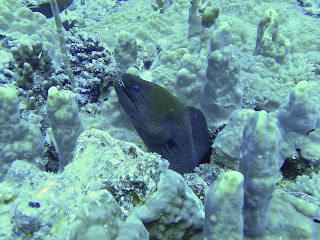 |
Even though the morays on this side of the world aren’t anywhere near the size they are in the Caribbean, they still freak me out. That face. It just spells out scary creature of the abyss. |
 |
This is the story of a lonely oriental sweetlips who wished he could be a bluestripe snapper. He would sit on his coral head all day long and watch longingly as they schooled around the reef. The end. |
 |
I love flounders. They lay on their sides all camouflaged in with their surroundings and have both eyes on one side of their body. Weird huh? It gets better though. These fish are born with an eye on either side of their head like any normal self-respecting fish, but throughout their life cycle, as they find themselves laying flat on the sand for protection from predators, one eye actually migrates to the other side of its body. |
 |
Emperorfish are incredibly fun to watch hunt. They are normally silver by day, but when in stealth mode they change into this marbled pattern so that they resemble a grouper. I’ve watched a group of groupers and a lone empororfish in disguise chase a morray eel around a reef, hoping for a meal. This guy isn’t exactly helping himself with that obvious yellow mustache though. |
 |
The other day we were diving New Drop Off and there was a fair bit of current so we used our reef hooks to watch the show. The spot where I decided to attach my reef hook just happened to be in a clown triggerfish’s territory and I got to spend an amusing ten minutes watching the poor little fellow swim angrily with his trigger up at my orange line. His mouth was about big enough to wedge a pee into, so unfortunately for him, he wasn’t too threatening. |
 |
20. Juvenile Rockmover Wrasse In the magical world of fish, juveniles almost never resemble their adult versions. So occasionally you come across fish that you have no idea what in the world it might be and are sent scrambling through every page of the fish book until you find it. Meet the juvenile rockmover wrasse. They like to mimic bits of drifting weed with their “to and fro” swimming motion. |
 |
Check out those lips! These guys are born brown with large white blotches and mimic the movement of a poisonous flatworm as a defense mechanism. Then as they age they gain more spots, the color of which reverse from white to black. |
 |
This is a little humphead parrotfish who was swimming all by his lonesome the other day. For more fun stories on these great fish read Bumping Uglies. |
 |
23. Pacific Double-Saddle Butterflyfish And to end we have one of multiple varieties of butterflyfish. While these guys are common in the wild, they are rarely imported into aquariums. However, if you have a problem with certain kinds of anemones, these guys will eliminate the culprit in less than six weeks! |
